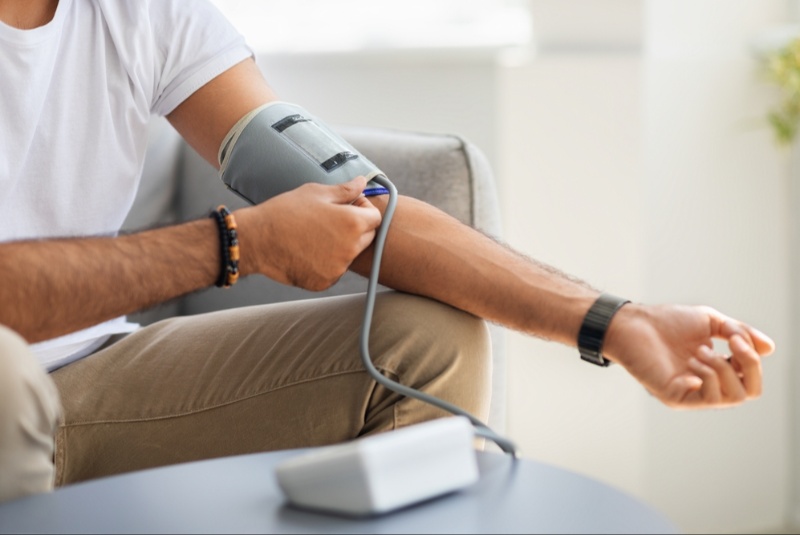In an age where health awareness is paramount, having a home blood pressure monitor has become essential for many individuals. These devices provide a convenient way to regularly check blood pressure, crucial for managing conditions like hypertension. However, with a multitude of models and features available, selecting the right one can be daunting. This article offers smart shopping tips to help you choose the best home blood pressure monitor for your needs.
Understanding Blood Pressure Monitors
Before diving into the selection process, it's important to understand what blood pressure monitors do and why accuracy is key. These devices measure the pressure of blood in your arteries and provide two readings: systolic and diastolic pressure. Accuracy is vital as incorrect readings can lead to mismanagement of hypertension and related health risks.
Types of Blood Pressure Monitors
There are mainly two types of home blood pressure monitors: arm cuff and wrist cuff models. Arm cuff models are generally more accurate and are the type most commonly used in medical settings. Wrist cuff models are more compact and portable but can be less accurate if not used exactly as directed.
Features to Consider
When shopping for a blood pressure monitor, consider features like automatic inflation, memory storage for previous readings, large and clear display screens, and the ability to average multiple readings for greater accuracy. Some models also offer connectivity to smartphones for easy tracking and sharing of data with healthcare providers.
Size and Fit of the Cuff
One of the most critical factors in ensuring accurate readings is the size and fit of the cuff. A cuff that is too small or too large can give incorrect readings. Most monitors come with a standard-sized cuff, but if your arm circumference is outside the average range, you may need to buy a different-sized cuff separately.
Validation and Approval
Look for a blood pressure monitor that has been clinically validated for accuracy. This means the device has been tested and approved according to established protocols. Monitors approved by health organizations or standard-setting bodies are generally more reliable.
Ease of Use
A user-friendly blood pressure monitor is essential, especially if it will be used by elderly individuals or those not tech-savvy. Features like one-touch operation, easy-to-read displays, and simple interfaces make regular monitoring less of a chore.

Data Storage and Connectivity
Modern blood pressure monitors often come with the ability to store multiple readings. This feature is crucial for tracking trends over time. Some advanced models also offer connectivity to mobile apps or health management software, allowing you to easily share data with your doctor.
Power Source
Consider whether the monitor operates on batteries, a power adapter, or both. A battery-operated monitor is more portable, while one that works with a power adapter eliminates the need for regular battery replacements.
Brand Reputation and Warranty
Choosing a monitor from a reputable brand can increase the likelihood of accuracy and reliability. Additionally, check the warranty and customer service options. A good warranty can provide peace of mind and ensure support if the device malfunctions.
Cost and Health Insurance
Blood pressure monitors range in price, and it's important to find a balance between cost and quality. Some health insurance plans might cover the cost of a blood pressure monitor, especially if it's medically necessary, so check with your insurance provider.
Reading Reviews and Recommendations
Before making a purchase, read customer reviews and seek recommendations. Reviews can provide real-life insights into the performance and durability of the models you're considering. Healthcare provider recommendations are also valuable as they can suggest models that have shown consistent accuracy and reliability.
The Role of Lifestyle in Blood Pressure Monitoring
While selecting the right blood pressure monitor is important, it's equally crucial to understand the role of lifestyle in blood pressure management. Factors like diet, exercise, stress levels, and medication adherence significantly impact blood pressure readings. A home monitor provides the most benefit when used as part of a broader lifestyle approach to health. Regular monitoring can help you see the effects of lifestyle changes, like reduced sodium intake or increased physical activity, on your blood pressure. This holistic approach, combining accurate monitoring with lifestyle modifications, can lead to more effective management of blood pressure and overall health.
Understanding the Importance of Regular Calibration
Regular calibration of your home blood pressure monitor is crucial for maintaining its accuracy over time. Even the best monitors can drift from their original settings, leading to false readings. Most manufacturers recommend having the device calibrated at least once a year or as specified in the user manual. Some advanced models have automatic calibration features, but for others, you might need to send the device back to the manufacturer or take it to a certified professional. Keeping your monitor well-calibrated ensures you can trust the readings you get, which is essential for effective health management.
Consulting with Healthcare Professionals
Before purchasing a blood pressure monitor, consult with your healthcare provider, especially if you have a condition like arrhythmia or if you're pregnant. Your doctor can advise on the most suitable type of monitor and help you understand how to interpret the readings correctly.
Selecting the right home blood pressure monitor is a crucial step in managing your health. By considering factors such as the type of monitor, cuff size, features, accuracy, brand reputation, and cost, you can make an informed decision that suits your health needs. Remember, while a home blood pressure monitor is a valuable tool, it should complement regular check-ups with your healthcare provider, not replace them.




